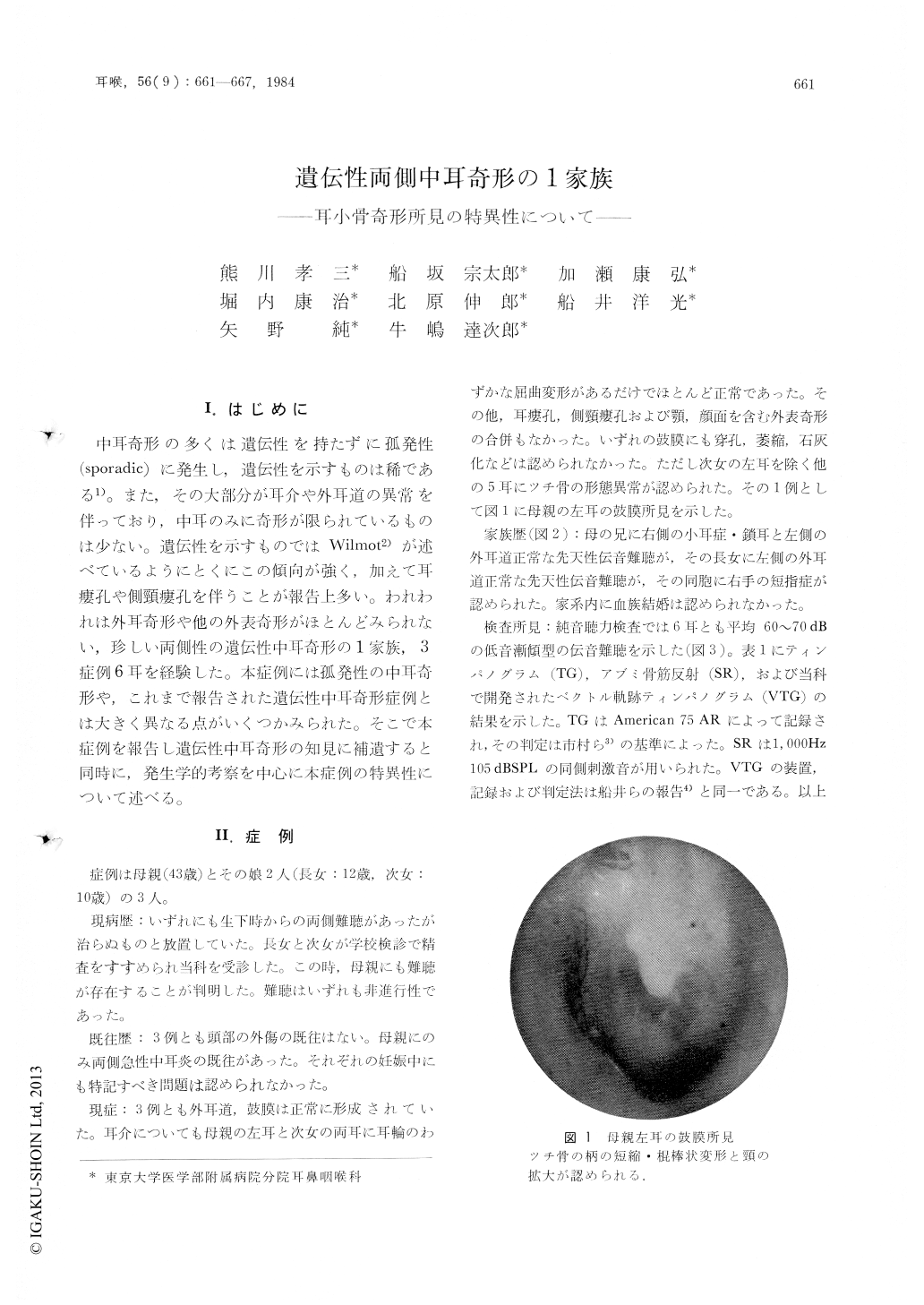Japanese
English
- 有料閲覧
- Abstract 文献概要
- 1ページ目 Look Inside
I.はじめに
中耳奇形の多くは遺伝性を持たずに孤発性(sporadic)に発生し,遺伝性を示すものは稀である1)。また,その大部分が耳介や外耳道の異常を伴っており,中耳のみに奇形が限られているものは少ない。遣伝性を示すものではWilmot2)が述べているようにとくにこの傾向が強く,加えて耳瘻孔や側頸瘻孔を伴うことが報告上多い。われわれは外耳奇形や他の外表奇形がほとんどみられない,珍しい両側性の遺伝性中耳奇形の1家族,3症例6耳を経験した。本症例には孤発性の中耳奇形や,これまで報告された遺伝性中耳奇形症例とは大きく異なる点がいくつかみられた。そこで本症例を報告し遺伝性中耳奇形の知見に補遺すると同時に,発生学的考察を中心に本症例の特異性について述べる。
The hereditary conductive deafness is usually associated with multiple abnormalities of the pinna, meatus, drum, middle ear cavity, jaw and face. The authors experienced 3 rare cases with bilateral middle ear malformations in one family. They had almost normal external ears with no other malformations such as preauricular fistulas, cervical fistulas and face malformations. Surgery of 6 ears revealed the following complicated anomalies ; 1) Conglomerate of the malleus and the incus, and their ankylosis to the tympanic wall in 5 ears. 2) Absence of the long emus of the incus and hypoplasia of the superstructure of the stapes in all 6 ears. 3) Fixation of the footplate of the stapes in 4 ears. 4) Absence of the stapedial muscle in 4 ears.
It can be speculated from the embryogenetic consideration that arrest of multiple developmental processes resulted in these ossicular malformations. That is, two developmental processes are arrested in 2 ears and three developmental processes in 3 ears. This is a specific feature of these cases different from the sporadic or the hereditary middle ear malformations reported up to the present.

Copyright © 1984, Igaku-Shoin Ltd. All rights reserved.


